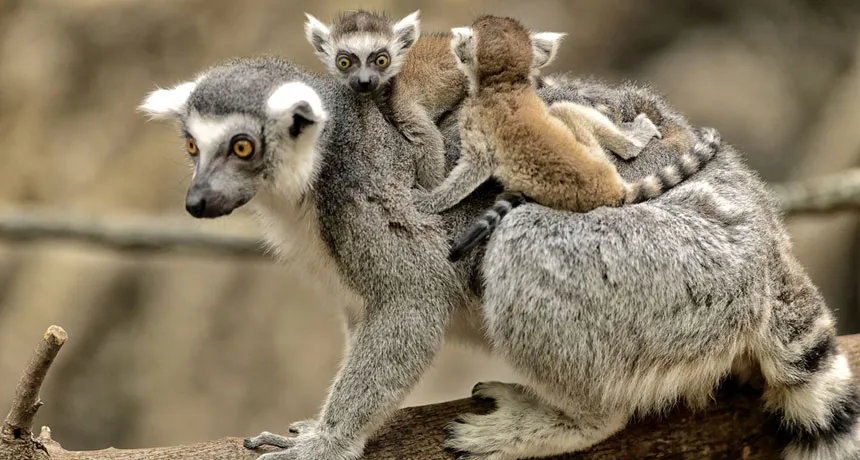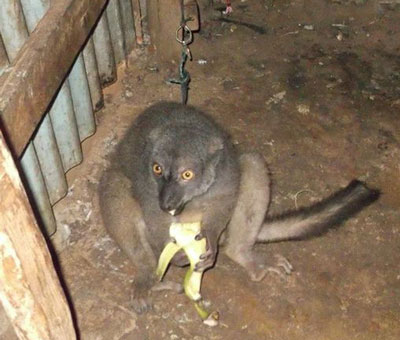Lemurs aren’t pets

NOT PETS Ring-tailed lemurs are adorable wild animals. A new survey finds that thousands of lemurs, from many lemur species, are kept as pets in households in Madagascar, despite the practice being illegal.
Eric Kilby/Flickr (CC BY-SA 2.0)
- More than 2 years ago
Whenever I see a ring-tailed lemur in the zoo, there’s always a moment when I think, “I’d love to take one home.” But the sane part of my brain kicks in and reminds me that lemurs are wild animals, and wild animals aren’t pets. Also, owning a lemur is illegal under Madagascar and international law (Madagascar law matters because that’s where all lemurs come from).
There’s no danger I’d actually be tempted into lemur ownership because no one is hawking lemurs at my local pet store. But in Madagascar, it seems a lot of people have succumbed to the temptation of lemur cuteness. Based on a new survey in that country, researchers estimate that more than 28,000 lemurs have been kept in households since 2010. The study was published January 5 in Oryx.
Kim Reuter of Temple University in Philadelphia and colleagues collected data from 1,093 households in 10 cities and seven villages in Madagascar in 2013. Less than 3 percent of the people surveyed admitted to owning a lemur at the time or in the past. Some people who did keep a pet lemur kept their primates for only a short time — they probably ate the lemur or sold it to someone else — but many held onto their animals for years. Scaling up the results from the survey led to an estimate of 28,253 lemurs held in captivity and almost 10,000 of those held for three years or more.

There are dozens of lemur species, and not all could be found in captivity. For instance, nobody kept a creepy aye-aye, a species considered a bad-luck omen in Madagascar. But the researchers worry that the wildlife trade, even at low levels, could have a negative impact on already-rare species, such as the endangered Sanford’s brown lemur, and species that are large and slow to reproduce, like the critically endangered ruffed lemur.
And 91 percent of lemur species are considered to be at risk of going extinct. They’re rapidly losing habitat. Illegal logging — one of the reasons for the habitat loss — is on the rise due to the country’s political instability and rising poverty. And the primates have lost numbers to the bush meat trade. Reuter warns that conservation plans that don’t include the pet trade could have an increased risk of failure.






